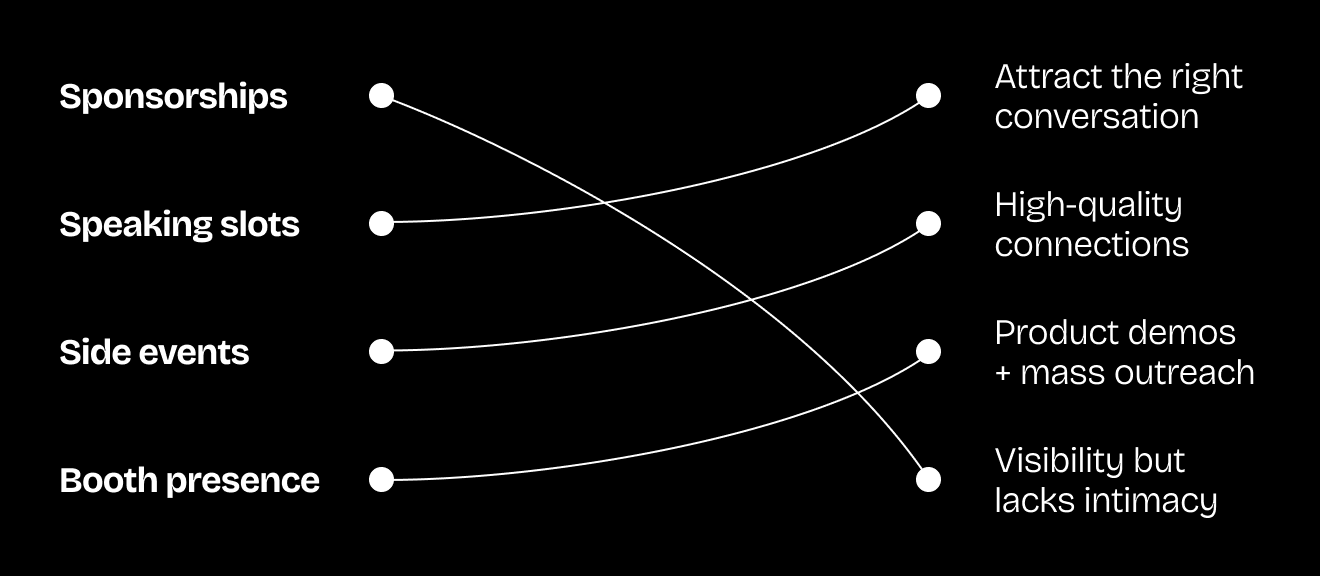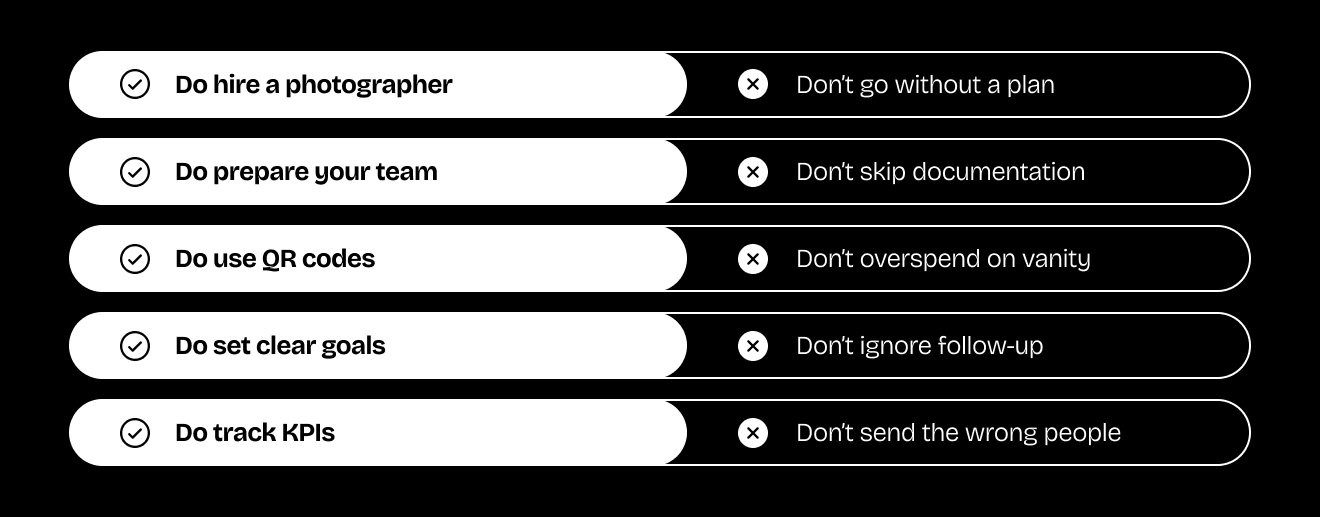Related Articles



Most Web3 projects treat conferences like participation trophies. They show up, hand out stickers, take selfies, and call it marketing. Then they wonder why nothing changed.
Here's the reality: participating in a crypto or Web3 conference isn't about "being present." It's about positioning your project in an ecosystem where trust and visibility determine survival. Done right, a conference presence builds credibility, enables real conversations, and creates business value that compounds for months. Done wrong, it's just an Instagram story that costs $15K.
Before you book that flight to Token2049, here's what you actually need to know.

Participating in a crypto or Web3 conference goes far beyond just showing up and networking. It's about positioning your project in a fast-moving ecosystem where trust and visibility are key.
Before anything else, teams need to ask themselves: Why are we doing this? What do we want to achieve?
Is the goal exposure, investor outreach, partnerships, or launching a product? Understanding the purpose is critical because, without clarity, participation becomes performative. Done right, an event presence can boost credibility, enable 1:1 conversations, and create long-term business value.
Not all Web3 events are created equal. From large-scale conferences and hackathons to side events, each format serves different objectives.
Ask yourself: Who do we want to connect with? Devs, investors, users?
A tech-heavy hackathon won't bring the same ROI as a community meetup or private dinner with VCs. It's essential to choose events that match your stage, audience, and goals. Otherwise, you're wasting time, energy, and budget.
Many projects fall into the trap of showing up everywhere without knowing who they're trying to engage with.
Your ideal audience could be highly technical (devs, builders), business-driven (VCs), or community-based (DAO members). Understanding this informs everything: where to show up, how to show up, and who should represent you.
Remember: you don't need to be everywhere, just in the right places for your audience.

There's no one-size-fits-all when it comes to event presence. Some projects benefit from sponsorships and booths. Others shine on stage, giving talks or hosting smaller, side events.
What's important is to match the type of participation with your strategic goal:
Ask: What experience reflects our brand best and gets us closer to our target audience?
Web3 teams often operate with limited marketing budgets, so it's crucial to allocate spend where it counts.
Start by mapping out your available budget and listing event-related costs: travel, lodging, tickets, production, merch, side events, team meals, etc. Then prioritize based on your goals.
Will this cost help us generate leads, deepen relationships, or improve visibility?
For many projects, small targeted activations offer more ROI than big flashy booths.
Spend with intention, not ego.
The end of the event isn't the end of the impact. It's the beginning of follow-up.
To measure success, define your KPIs ahead of time: number of leads, investor intros, partnerships initiated, community signups, etc. Use CRM tools, QR codes, or manual logging to track who you meet.
Ask yourself: What tangible outcomes are we expecting from this event?
Without KPIs, you're relying on "vibes," and that's not a strategy.
Sending your entire team to an event is rarely the answer. You need people who understand the project, can communicate clearly, and know how to build relationships.
This includes at least one person focused on BD, someone technical (if needed), and ideally a founder or core contributor for higher-level conversations.
Ask: Who can truly represent our values and make the right connections on the ground?

Events don't start when you land. They start weeks before, even months.
Before the event:
During the event:
After the event:
A solid digital strategy amplifies your presence and extends the shelf life of your participation.
What happens after the event is where the magic happens. A handshake at a party means nothing if there's no follow-up.
Assign someone to handle post-event outreach, segment contacts (investors, partners, media, etc.), and build out a BD pipeline. Events are not the goal. They're a gateway.
Treat every interaction as a potential long-term relationship and build systems to nurture them over time. Speed matters here. Follow up within days, not weeks.

To wrap this up, here's a practical checklist that can make or break your event participation, especially when you're working with limited resources.
✅ Hire a photographer. Capture high-quality content for social, reporting, and documentation. No photos = no proof you were there.
✅ Prep your team. Align everyone on messaging, pitch points, and lead capture process before you go.
✅ Use QR codes. Link to contact forms, Calendly, pitch decks, product demos. Make it stupid easy for people to connect later.
✅ Set clear goals. Define what success looks like (visibility, leads, partnerships) and optimize everything around that.
✅ Track KPIs. Leads generated, meetings held, social reach, content performance. Measure impact, not just attendance.
✅ Follow up fast. Speed matters. Reach out within 48 hours, not two weeks.
❌ Don't go without a plan. Showing up without strategy = wasted time, energy, and money.
❌ Don't skip documentation. No photos = no social proof. Content is how others perceive your impact.
❌ Don't overspend on vanity. Big booths don't guarantee ROI. Spend smart, not loud.
❌ Don't ignore follow-up. If you don't nurture leads, someone else will.
❌ Don't send the wrong people. Choose team members who can pitch, connect, and represent your brand authentically.
Whether you're planning your first Web3 conference appearance or refining your event strategy, the difference between wasted budget and real ROI comes down to preparation and execution.
At Distractive, we help Web3 projects show up strategically. From positioning and messaging to content creation and post-event follow-through. If you want to make your next event count, contact us.
Because showing up isn't enough. You need to show up right.
Build the future of Web3 with people who get you. No suits required. Memes encouraged.